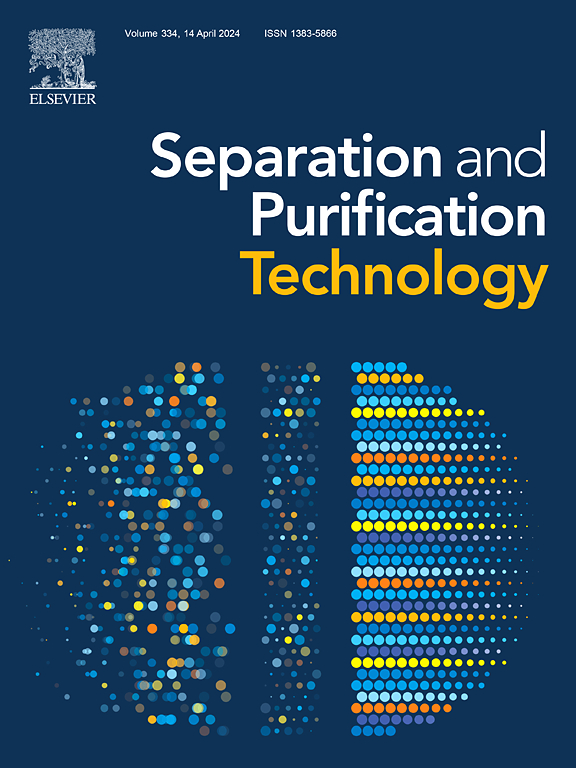Poly(vinyl alcohol)/poly(ethylene glycol) ion-solvating membrane with NiFe-LDH for high-performance alkaline water electrolysis
IF 8.1
1区 工程技术
Q1 ENGINEERING, CHEMICAL
引用次数: 0
Abstract
Novel diaphragms based on the concept of ’ion-solvating membranes’ have garnered increasing attention for alkaline water electrolysis (AWE). In this study, a novel ion-solvating membrane was developed by incorporating nickel–iron layered double hydroxide (NiFe-LDH) and poly(ethylene glycol) (PEG) into a poly(vinyl alcohol) (PVA) matrix. Through dual regulation of LDH and PEG content, the physicochemical characteristics including electrolyte uptake and retention, swelling behavior, hydrophilicity, and ion conductivity, are improved significantly. At a PEG content of 10 % and NiFe-LDH content of 5 %, the membrane (PE10L5) exhibited satisfactory hydrophilicity (26.32°), along with high electrolyte uptake (161.23 %) and high conductivity (51.63 mS/cm). Alkaline water electrolyser utilizing the PE10L5 membrane demonstrated an ultra-low ohmic impedance (0.0415 Ω·cm2) and a high current density of 900 mA cm−2 at a cell voltage of 2 V in 30 % KOH at 80 °C. Besides, a possible degradation mechanism was supposed to be based on a long-term stability test. This study presents a new direction and opportunity for the development of high-performing ion-solvating membranes.


求助全文
约1分钟内获得全文
求助全文
来源期刊

Separation and Purification Technology
工程技术-工程:化工
CiteScore
14.00
自引率
12.80%
发文量
2347
审稿时长
43 days
期刊介绍:
Separation and Purification Technology is a premier journal committed to sharing innovative methods for separation and purification in chemical and environmental engineering, encompassing both homogeneous solutions and heterogeneous mixtures. Our scope includes the separation and/or purification of liquids, vapors, and gases, as well as carbon capture and separation techniques. However, it's important to note that methods solely intended for analytical purposes are not within the scope of the journal. Additionally, disciplines such as soil science, polymer science, and metallurgy fall outside the purview of Separation and Purification Technology. Join us in advancing the field of separation and purification methods for sustainable solutions in chemical and environmental engineering.
 求助内容:
求助内容: 应助结果提醒方式:
应助结果提醒方式:


